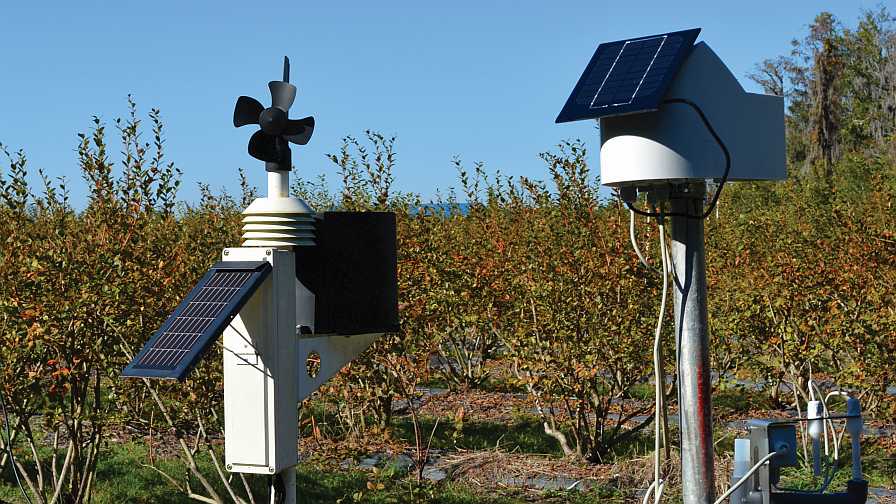Dollars Available for Florida Growers Seeking to Save Water

In recent years, Florida growers have sought cost-share funds for weather stations and soil moisture probes to maximize irrigation efficiency.
Photo by Frank Giles
There are many practices, products, and technologies you can deploy to protect the state’s waters. Some of these may be eligible for cost-share funds for those seeking to invest in such tools and tactics.
The Florida Department of Agriculture and Consumer Services (FDACS) offers cost-share opportunities through its agricultural best management practices (BMPs) program. According to Kim Shugar, Deputy Director of FDACS Office of Agricultural Water Policy (OAWP), the program is a good way to defray a significant portion of the cost of investing in practices and equipment aimed at saving water and reducing nutrient runoff.
“Over the last four years, the majority of the cost-share projects are broadly grouped under irrigation improvements/automation,” Shugar says. “Growers are using the program for conversions to more efficient irrigation methods like drip or microjet irrigation, automatic irrigation controllers/engines, and soil moisture probes/weather stations. We also are seeing investments in precision agriculture with tools like GPS guidance systems and variable rate fertilizer equipment.”
Cost-Share Requirements
Contingent of fund availability, growers can apply for cost-share funds from FDACS. Here are a few important requirements they need to meet.
- The project site must be in regulatory compliance with all applicable local, state, and federal regulations.
- The producer/landowner/property cannot be involved in a current administrative action with a water management district, Florida Department of Environmental Protection, or FDACS.
- The producer/landowner must be enrolled in an applicable FDACS-adopted BMP program, which means a producer/landowner must have
an active Notice of Intent to Implement BMPs (NOI that was developed with and approved by an FDACS
representative).* - The landowner/producer and the property must have a record of at least one year of agricultural production.
- If the landowner/producer has been enrolled in an FDACS Program for more than 12 months, an implementation verification site visit must have been performed in the last 2 years.
*Special districts, municipalities, counties, water management districts, or agencies (governmental or otherwise) that are not agricultural producers are not required to submit an NOI.
Project Priorities
FDACS places a priority on basin management action plan (BMAP) areas in the state and on those projects that will provide the largest benefit to the water resources with an emphasis on nutrient reduction. Eligible categories, practices, or projects must provide for nutrient management, irrigation management, and/or water resource protection based on the technical evaluation of the proposal.
“The process is collaborative between the producer and an OAWP representative,” Shugar says. “It is most helpful that producers have reviewed the requirements of the BMP program to ensure they are in compliance with its requirements, have all records organized, and are responsive to information requests to move through the process quickly.”
As new technologies and practices come along, Shugar adds that FDACS will consider cost-share categories that have never received funding before. To proceed, the agency would require some kind of documentation from existing research studies, a research institution, or other justification provided by
the producer.
In general, FDACS will provide funds to cover up to 75% of an investment in products and practices that provide for nutrient management, irrigation management, and/or water resource protection. In most cases, cost-share projects for typical farming operations are capped at $250,000.
 This is the fourth in a series of articles featuring growers who are taking a proactive approach to protecting the water resources on and around their farms. The stories will investigate how production practices, equipment, and technology are helping growers in the Sunshine State do more to protect water. Come back next month for another installment.
This is the fourth in a series of articles featuring growers who are taking a proactive approach to protecting the water resources on and around their farms. The stories will investigate how production practices, equipment, and technology are helping growers in the Sunshine State do more to protect water. Come back next month for another installment.









